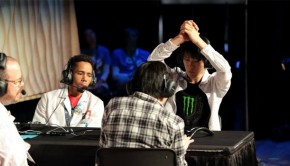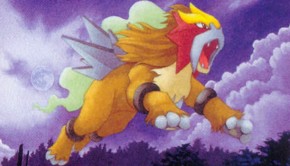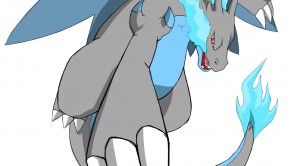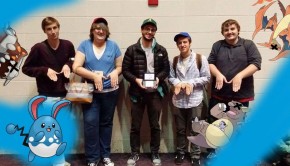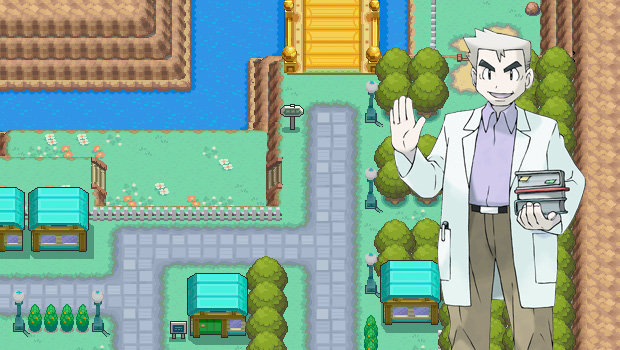Japan GBU Tour: A Beginning Cup Experience
Hey guys! Probably most of you have already heard about me, but this is my first Nugget Bridge article, so before I start talking about Pokémon I believe it’s appropriate to introduce myself.
My name is Matteo Gini, I’m from Italy and I’m better known as “Matty“. I started playing VGC in 2011 when it was announced that Italy would get its own qualifier. Despite the fact that I had only played a short while, I managed to do pretty well that year, being runner-up in both Italian National Championships and the World Championships in 2011. The 2012 season wasn’t as great as the previous, but I got some satisfactory results, like reaching the Finalist Lounge in the French National Championships, runner-up in the 2012 Smogon VGC Tournament and 15th at Worlds (3-3).
Unfortunately this year I didn’t have much time to create an article about my Worlds experience and my Worlds Team…I also noticed that people already posted several Worlds reports, so I thought it would have been more useful to the community to write an article on another experience that I think almost no one has tried: the GBU Beginning Cup! This tournament was reserved only for Japanese players, or more precisely only to those people who are in possession of a Japanese version of Pokémon Black & White 2. I have a Japanese Pokémon Black 2, so I was able to sign up on the Japanese Pokémon Global Link Website and attending the competition.
Metagame Foresight and Teambuilding
The peculiarity of this tournament, was the fact that it used a metagame never tried before, so the hardest thing to do was to analyze the Pokémon who were allowed to participate, predict the metagame that was going to create and build a team that could do well against both random and good players.
The tournament rules allowed me to use only Pokémon from the BW2 Unova Pokédex. The Unova Pokédex has changed considerably from BW: while it still contains all of the old Unova Pokédex, the updated Pokédex now also has some of the old generations’ Pokémon, for a total of 299. With Victini, Reshiram, Zekrom, Kyurem, Keldeo, Meloetta, and Genesect banned, the amount of usable Pokémon was 292. It did not take long to realize that the new metagame would have been very similar to that of 2011, with the addition of new threats such as Metagross, Tyranitar, Therian Formes and a few other good Pokémon. Luckily I have a good experience in VGC 2011, so I figured that Pokémon like Hydreigon, Thundurus, Terrakion and Conkeldurr would certainly remain at the top of usage, with the addition of Metagross, Tyranitar, Excadrill, Landorus and Thundurus Therian Formes. On the contrary, Pokémon as Tornadus and Chandelure would definitely been used less, because of the new Pokémon added to the metagame.
My biggest problems were not having much time to build the team or chances to test it on GBU or simulator, so I thought the best thing to do was use a VGC 2011 team that worked well, then fix it to counter the new threats. The first thing that came to my mind was to take my favorite pair of my 2011 Worlds team: Krokodile – Eelektross and readapt it for the new metagame. I changed Kroko for Landorus-T, maintaining the same synergy and Intimidate support while losing the dangerous Fighting weakness. The next Pokémon to come to my mind were Thundurus and Terrakion, two of the best Pokémon in the 2011 metagame: Thundurus also had good synergy with Landorus, and could spam paralysis for Eelektross and Rock Slide paraflinches. At that point I decided to add Hydreigon, recreating the same core team of Ray’s 2011 Worlds team. For the last slot I needed something that would allow me to counter Hydreigon, Terrakion and Ice types… Metagross was perfect for these tasks, so I went with it.
![]()
![]()
![]()
![]()
![]()
![]()
The Team
![]()
Eelektross (F) @ Sitrus Berry
Trait: Levitate
EVs: 252 HP / 4 Def / 244 SAtk / 4 SDef
Modest Nature (+SAtk, -Atk)
– Thunderbolt
– Hidden Power [Ice]
– Flamethrower
– Protect
Eelektross was my anti-metagame Pokémon at Worlds 2011, and it worked very well in a metagame where almost every team contained Thundurus and Tornadus. Neither they, nor their friend Landorus were able to hit it neutrally with their STAB attacks, while Eelektross could comfortably hit Landorus and Tornadus for OHKO and Thundurus for a very high damage. For the Beginning Cup, I figured that Tornadus usage would have probably fallen, but I foresaw that in the same way Landorus would go up, so I confirmed Eelektross in my team. His bulkiness, Electric-typing and Levitate allow Eelektross to survive several attacks, especially when paired with an Intimidate Pokémon like Landorus.
With Thunderbolt, Hidden Power Ice and Flamethrower, Eelektross can hit everything for at least neutral damage and was a good counter to Pokémon like Azumarill, Excadrill, Ferrothorn, Thundurus, Landorus, Mamoswine and Metagross without Zen Headbutt. I decided to maximize HP, taking away Worlds’ Life Orb and giving it a Sitrus Berry, but I lost the KO on Amoonguss with the Earthquake + Flamethrower combo.
![]()
Hydreigon (M) @ Chople Berry
Trait: Levitate
EVs: 244 HP / 4 Def / 132 SAtk / 12 SDef / 116 Spd
Modest Nature (+SAtk, -Atk)
– Dragon Pulse
– Flamethrower
– Substitute
– Protect
The spreads of Hydreigon and Thundurus are the same ones used by Ray at Worlds 2011, so I guess the first thing to do is give him the right credits. Hydreigon has enough speed to outspeed Modest Chandelure and enough Sp.Atk to OHKO 4 HP Hydreigon with Dragon Pulse. The 244 HP EVs help to get a better Substitute number, and thanks to 12 SpD EVs, Max Sp.Atk Chandelure Heat Wave and Jellicent Water Spouts can’t break the sub. I replaced Dark Pulse for Flamethrower because I needed a Fire move to hit Metagross for a high damage. This choice made me a little weak to Trick Room teams, though, because I didn’t have any Dark-type moves in my team. In the first part of the tournament I regret not having used the standard Dragon Gem set with more Speed and three attacks, but after a little pratice Substitute proved to be a very useful move, especially when supported by Thunder Wave from Thundurus. Chople Berry helped Hydreigon to survive many Fighting moves, especially from Conkeldurr, which has been one of the most used Pokémon of the tournament.
![]()
Thundurus (M) @ Charti Berry
Trait: Prankster
EVs: 244 HP / 160 Def / 4 SAtk / 76 SDef / 24 Spd
Bold Nature (+Def, -Atk)
– Thunderbolt
– Hidden Power [Ice]
– Thunder Wave
– Substitute
During the 2012 season I used bulky Thundurus a lot. It’s one of the best Pokémon in the game and has always been part of my team in every official tournament, so there was no reason not to use it. In the 2011 metagame, the attacks directed at Thundurus were mostly physical, so I took the formidable set that Ray used for Worlds, simply changing the Hidden Power from Flying to Ice. I slightly changed the EV spread, adapting it to the new Hidden Power IVs and adding one more Speed point to avoid having the same speed as Hydreigon to always be sure who would attack first. Thundurus can take Overheat from max Sp.Atk Chandelure, and, thanks to Charti Berry, max Atk Terrakion’s Rock Slide is a 3HKO. It can also outspeed Modest 252 Speed Chandelure. In a metagame in which the major threats are all weak to Ice, it seemed appropriate to drop HP Flying for HP Ice, and this later proved to be the right choice. Thunderbolt and Thunder Wave are staples for Thundurus, while for the last slot I was undecided between Taunt and Substitute. The choice fell on Substitute. While this did not help me solve my problems with Trick Room, this move proved to be useful in many occasions, especially to take advantage from my opponent’s Protect and switches and to take moves like Hydreigon Draco Meteor and control the situation with more confidence. Thundurus did a great job for the team, spamming paralysis everywhere and decreasing the opponents speed: Eelektross, Hydreigon and Metagross really enjoy having paralyzed opponents, and also Terrakion and Landorus could use Rock Slide for some useful paraflinches.
![]()
Terrakion @ Choice Scarf
Trait: Justified
EVs: 180 HP / 252 Atk / 76 Spd
Adamant Nature (+Atk, -SAtk)
– Close Combat
– Rock Slide
– Sacred Sword
– Earthquake
Choice Scarf Terrakion was probably the strongest Pokémon in VGC 2011, thanks to his excellent Fighting/Rock type, high attack and the ability to hit Thundurus, Tornadus, Hydreigon and Terrakion for super effective damage. The set is pretty standard, but I run Speed EVs only to outspeed neutral Choice Scarf base 85, especially Heracross. At the end of the tournament Terrakion was the Pokémon I used less because of the frequent presence of Conkeldurr, Metagross and Landorus — sometimes even all together in the same team. Anyway, Terrakion did a good job when I decided to use it in some games, revenge killing opposing threats, countering sun teams and closing the match thanks to his excellent Attack and Speed.
![]()
Metagross @ Shuca Berry
Trait: Clear Body
EVs: 252 HP / 252 Atk / 4 Def
Adamant Nature (+Atk, -SAtk)
– Meteor Mash
– Earthquake
– Ice Punch
– Protect
Metagross was the last Pokémon that I added in the team, and once again proved to be one of the best for the double metagame. I needed something that would allow me to counter Hydreigon, Terrakion, and Ice-types and could hit Conkeldurr for a high damage, so Metagross was the perfect Pokémon for the last slot. The EV spread is standard, with Max Atk and HP. As regards the attacks, I dropped Zen Headbutt for Ice Punch in order to hit Thundurus, Hydreigon and Landorus for super effective damage. Metagross has a good synergy with Thundurus, Eelektoss and Hydreigon, taking hits like a champ and hitting hard with great coverage moves. I gave it a Shuca Berry because I noticed that my team was terribly Mamoswine weak. With Shuca I could to lure it, take a little damage from Earthquake (especially after Intimidate) and score an OHKO with Meteor Mash. Shuca Berry was also really useful against other Ground-types like Excadrill.
![]()
Landorus (Landorus-T) (M) @ Yache Berry
Trait: Intimidate
EVs: 4 HP / 252 Atk / 252 Spd
Adamant Nature (+Atk, -SAtk)
– Earthquake
– Rock Slide
– Imprison
– Protect
I was really curious to try Landorus-T, and this tournament was the perfect opportunity to do so. In 2011 I really appreciated the support and the offensive power that Krokodile was able to give to my team, and Landorus-T does the same things but with a better Attack stat and more defensive typing. I often used it in combo with Eelektross, but it also worked very well with Thundurus and Hydreigon.
Intimidate is a great ability in doubles, and Landorus is bulky enough to get in and out several times with some smart switches. Earthquake, Rock Slide and Protect are staple moves for Landorus, while as regards the last slot, I decided to use Imprison. Imprison seemed to be a good move, especially against Sandstorm teams and opposing Landorus, but in the end this choice turned out to be really bad. I almost never used Imprison, maybe only one or two times in all the tournament, and both times I would have won the game anyway. Certainly another attack, like U-Turn, would have been much better. Yache Berry was a great choice for this Pokémon because virtually every game, the opponent tried to hit him with an Ice-type attack, and Landorus was able to take the hit without much problems for about 50% damage. Landorus-T was the first answer for Sandstorm teams, and for Pokémon like Terrakion, Metagross and physichal threats in general.
Tournament, strategies and threats
My team did not have a particular strategy: it was simply a flexible Goodstuff team with which, playing well, I could be able to outplay all other strategies, thanks to the good synergy of my Pokémon. Obviously, many other players have chosen for the same style of play. In the end, I noticed that all the players with a high score used Goodstuff teams, but there were many other players who used different strategies. Now I will try to summarize the main ones I faced.
Goodstuff
![]()
![]()
![]()
![]()
![]()
![]()
Goodstuff teams have been the strategy of most of the players who finished the tournament with a high score, and it is not hard to see why. Thanks to a great synergy, flexibility, possibility of choices and combinations, a good player can outplay and beat both the other Goodstuff and dedicated strategies without too much trouble. This strategy is perfect for players with a solid playstyle and good ability to predict, and proves to be the best in tournaments like this, where you have to face not only good players but also lot of random people.
Goodstuff Pokémon combine a good ability to take hits and excellent offensive power. Hydreigon, Conkeldurr and Thundurus for example, proved to be a very solid core in 2011, and I found it in a lot of teams. Hydreigon is the best Unova Dragon-type, and with his Dragon/Dark/Fire moves gets perfect coverage on everything in this metagame: Dragon Gem Draco Meteor is a free OHKO on on almost everything that doesn’t resist it, Dark Pulse let Hydreigon to be a great counter to Trick Room teams, and Flamethrower/Fire Blast are super effective attacks for Steel-types that Hydreigon can’t hit with its STAB moves. This Pokémon also gets some interesting new toys in BW2, like Heat Wave, Tailwind and Roost, but people didn’t use them very much, preferring the power of Fire Blast to Heat Wave and Flamethrower.
Thundurus was mainly used in its standard form with a bulky set in order to spam Paralysis and support the rest of the team. Sitrus Berry was the preferred item in this case, but sometimes I came across more offensive versions of Thundurus holding an Electric Gem. These were obviously more rare because everyone who planned to use an offensive Thundurus preferred to try the new Thundurus-T. I’ve had to deal with some, but honestly I was not particularly impressed as I was able to counter them without too much trouble.
Conkeldurr is a great VGC Pokémon and is able to do well both in Goodstuff and Trick Room teams thanks to its excellent attack and bulkyness. Unlike the European and American playstyle, the Japanese love to use bulky versions of Conkeldurr without investing fully in Attack and without using Flame Orb. Most of them carried a Sitrus Berry, or a Persim Berry in order to be used as recipients for a Swagger strategy. Conkeldurr also learns Ice Punch as a Move Tutor in BW2, and lot of people used it especially to counter Landorus-T, one of the best threats in the metagame.
Tyranitar and Metagross are the most significant of the old Pokémon added to the Unova2 Dex: the first does a great job also if you are not using a dedicated Sandstorm Team, and the second has always been a VGC staple thanks to its excellent attack and bulkyness. Metagross sets were the same as VGC 2012, with Lum Berry as the preferred item used to heal status like Paralysis or to abuse self Swagger strategy.
These were the most common Pokémon found in Goodstuff Teams, but dangerous threats don’t stop here: in spite of the centralized metagame, there were other Pokémon that have been able to carve a niche in several teams. Mamoswine, for example, has two excellent STABs and can hit most of the common Pokémon for super effective damage; Weavile does nearly the same, and has access to Fake Out and Dark STAB to counter Trick Room teams. Azumarill is another Pokémon that impressed me much and gave me a lot of trouble when I faced it — the Japanese love to use it as recipient for self Swagger strategy. Terrakion, Amoonguss and Chandelure were common Pokémon in VGC 2011, and also proved to be really strong Pokémon in this tournament when played correctly, despite the fact that the number of their counters is now increased. Arcanine is another Pokémon that I faced several times: defensive sets with Snarl and Will-O-Wisp can catch you off guard if not dealt with properly, and offensive ones with Fire Gem Overheat/Flare Blitz really hurt a lot.
Sandstorm




With Tyranitar added to the new Unova Pokédex, Sandstorm is probably the first strategy that comes to mind. Tyranitar has two great STABs and sky-high attack that make it one of the best Trick Room counters. Rock Slide is one of the best moves in the double metagame, and thanks to its Sand Stream ability, Tyranitar is also useful to counter dedicate Weather Teams. Excadrill is one of the best Pokémon able to abuse Sandstorm, and Terrakion is a good counter to Sun Teams. Landorus–T is one of the best Pokémon of the metagame and fits well in both Goodstuff and Sandstorm Teams. It can scare Pokémon like Metagross, which can be a problem for Terrakion and Tyranitar, and is the perfect counter to opposing Sandstorm Teams. Yache Berry and Choice Scarf were the preferred items for Landorus-T, but sometimes I also faced some mixed set with Hidden Power Ice or Earth Power.
Sandstorm is a pretty straightforward strategy, and honestly, I must say that didn’t impress me much. It’s really easy to predict what your opponent is going to do, and Landorus-T alone counters the whole team by itself. The only point in favor of this strategy is the fact that in this metagame it’s the only weather that can actually be used, so you don’t need to worry about any weather war for control of the battle.
Trick Room
After the release of BW and the introduction of Team Preview, making efficient use of Trick Room became really hard, but this strategy has always been and will remain an evergreen of the double metagame.
The fifth generation introduced some good Trick Room Pokémon, like Jellicent and Musharna. Both or them are really bulky and hard to OHKO, so pairing them with a Fake Out user like Scrafty means having the Trick Room guaranteed from the first round of the game. Thanks to Trick Room, Jellicent can proceed to hurt enemies using a powerful Water Gem Water Spout, and Musharna can support the team using Helping Hand or Swagger. Chandelure’s Ghost-type makes it immune to Fake Out and, in addition to using Trick Room, is able to exert considerable pressure on the opponent, forcing it to switch or use Protect. Amoonguss is a big deal in Trick Room Teams and can proceed to Spore your whole team while its ally spams strong attacks on your Pokémon. Scrafty, Conkelurr and Azumarill are brutal Trick Room weapons, with an enormous offensive potential and great coverage.
Thanks to Team Preview, countering Trick Room Teams isn’t that difficult because it’s easy to figure which Pokémon the opponent will use to open the game. Anyway, without strong Dark-type moves I was unable to stop Musharna, so I had to struggle a bit in some battles, using Protect and doing switches until the end of Trick Room, then take control of the situation.
Swagger
![]()
![]()
![]()
![]()
![]()
The Japanese love for self Swagger strategy is not a secret, so I expected to have to deal with it in some battles, but I also saw some unexpected and interesting new applications. As we all know, Thundurus is the king of Swagger and can use the move to annoy opponents’ special attackers or to increase the attack of its partner, suitably equipped with a Lum or Persim Berry. Thundurus’ priority Swagger is a really good move for Goodstuff Teams, while for Trick Room teams, the preferred Swagger user was Musharna, who is really slow and could use Swagger on Pokémon like Scrafty or Conkeldurr in order to boost their Attack and sweep under Trick Room. Metagross and Conkeldurr are probably the best Swagger recipients, and they work really well in both Trick Room and Goodstuff. Nevertheless, I must say that the recipient that impressed me most, and at the same time gave me the most problems, was definitely Azumarill. This Aqua Rabbit Pokémon reaches a 448 Atk stat after a Swagger and hits really hard with priority Aqua Jet, Waterfall and Ice Punch. It’s also very bulky and nearly impossible to OHKO without a super effective attack.
Sun
Sun is probably the worst weather to use because it loses to both Sandstorm and Rain Teams, but without Politoed and with some good Pokémon able to abuse Sun, this strategy found a small niche in the Beginning Cup metagame. Obviously, the strategy behind Sun Teams is attacking strong, with violent and fast Fire-type Pokémon like Ninetales, Chandelure and Arcanine. No one likes to take a sun boosted Heat Wave or Overheat, so against this kind of team is really important having a good matchup from the turn 1 and good Rock-type Pokémon like Tyranitar and Terrakion. Chlorophyll Pokémon like Lilligant and Tangrowth are pretty common thanks to their ability to counter Rock types and spam Sleep Powder. Terrakion also is used in order to kill opponent’s Tyranitar.
Perish Song




Well…that wasn’t a great team, but it reminded me Wolfey’s Perish Song team, and I really liked the use of Shadow Tag Gothitelle, so I’ve included it in my strategies analysis. Obiouvsly the main goal of this guy was to trap the opponent’s Pokémon while using Perish song with Altaria, Jigglypuff and Dewgong. Gothitelle is a very bulky Pokémon and knows a lot of support moves, like Trick Room and Safeguard. With a Chesto Rest set or Sitrus Berry it becames really hard to take down. Jigglypuff was able to annoy the team using Sing, and Dewgong has access to Fake Out and STAB Ice Attacks.
Conclusion
Personally, I’ve always liked the Wi-Fi tournaments organized by the Global Battle Union, and on this occasion I must say that I enjoyed myselg very much, thanks to a metagame that had never been tried before. I ended with a score of 1801 and 13th place, but I have to say that I didn’t play a lot, and with another battle I would have been in the Top 8. I honestly thought to place a little better because the best opponent I found had a score of 1707, but it does not matter since I joined mainly to have some fun and discover this new metagame. Also, a few days ago, I noticed that my name has disappeared from the rankings of the Global Link… probably because the staff figured that I was not Japanese.
Regarding the metagame, it was not hard to imagine that it would be very similar to that of 2011, but I must say that I really enjoyed it a lot. I don’t believe that we’ll have this metagame for the VGC 2013 season (probably a VGC 2012 + BW2 makes more sense), but with the fact that The Pokémon Company has announced that the best ranked players in GBU tournaments will get byes for regional championships, undoubtedly those tournaments are going to assume an important role in VGC, so attending this tournament and reporting back was a really good idea, which could be helpful for interested people and community in general.
As regards the more technical aspects, the points assignment seemed slightly different, and this is also proved by the fact that although there were only three days to play, he winner has ended with a score of 1862. I’m not absolutely sure, however, because this could also be due to the fact that age divisions were introduced, so the battles were more difficult than usual, because even those players with a score of 1500 or 1600 could be able to give a tough fight and sometimes also to win. However, the thing that really disappointed me is the way they have dealt with the disconnections problem. Yeah, now if a player turns off his Nintendo DS during the connection with another player he loses the battle and can’t reconnect fot an hour, but this does not apply in the case where the connection goes down. This means that if you are losing and turn off your router nothing will happen, and you can easily continue to search for another battle. Honestly, this leaves me a lot of doubts, especially after the recent news about GBU tournaments and Regional Championships byes.
Anyway, this has been my Beginning Cup experience. In two weeks I will most likely also compete in the All Star Cup organized by the Japanese GBU, and I’ll try to find time to write a report like this. I hope you enjoyed the article, and I wish you all good luck for the upcoming Autumn Friendly and Regional Championships.


